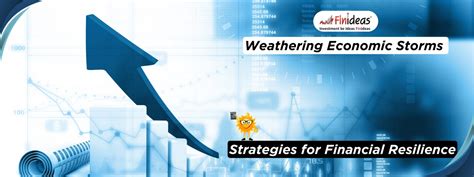Though financial markets have been relatively calm in recent years, there are signs that a storm is brewing. Economic growth is slowing, interest rates are rising, and trade tensions are escalating. These factors could all lead to a downturn in the economy, which would have a negative impact on businesses and consumers alike.

Though the economy is still growing, the pace of growth is slowing. In the United States, GDP growth is expected to slow from 3.1% in 2018 to 2.9% in 2019 and 2.7% in 2020. This slowdown is being driven by a number of factors, including the fading effects of the Trump tax cuts, slowing global growth, and the trade war with China.
Though interest rates are still low, they are rising. The Federal Reserve has raised interest rates three times so far this year, and it is expected to raise rates again in December. Rising interest rates make it more expensive for businesses to borrow money and invest, which can slow economic growth.
Though trade tensions have eased somewhat, they are still a threat to the economy. The Trump administration has imposed tariffs on billions of dollars of Chinese goods, and China has retaliated with tariffs of its own. These tariffs are making it more expensive for businesses to import and export goods, which can hurt profits and lead to job losses.
These factors could all lead to a downturn in the economy. A downturn would be characterized by slow growth, rising unemployment, and falling stock prices. A downturn would be painful for businesses and consumers alike. Businesses would see their profits decline and would be forced to lay off workers. Consumers would see their incomes decline and would be forced to cut back on spending.
Though a downturn is not inevitable, it is a risk that businesses and consumers should be aware of. Businesses should take steps to prepare for a downturn, such as building up cash reserves and reducing debt. Consumers should make sure that they have a rainy-day fund and that they are not overleveraged.
By taking these steps, businesses and consumers can weather the storm and emerge from it in a stronger position.
Tips for Weathering an Economic Storm
- Build up cash reserves. One of the best ways to prepare for a downturn is to build up cash reserves. This will give you a cushion to fall back on if your income declines. Aim to have at least three months of living expenses saved in cash.
- Reduce debt. If you have any outstanding debts, such as credit card debt or student loans, try to pay them down as quickly as possible. This will reduce your monthly expenses and make it easier to weather a downturn.
- Make a budget. A budget will help you track your income and expenses and make sure that you are not spending more than you earn. This will help you to save money and prepare for a downturn.
- Cut back on unnecessary expenses. If you are facing a downturn, it is important to cut back on unnecessary expenses. This could include things like dining out, entertainment, and travel.
- Increase your income. If possible, try to increase your income during a downturn. This could include getting a part-time job, starting a side hustle, or negotiating a raise at your current job.
Benefits of Weathering an Economic Storm
- Strengthened financial position. By taking steps to prepare for a downturn, you can strengthen your financial position and make it easier to weather the storm. This will give you peace of mind and help you to achieve your financial goals.
- Increased resilience. When you have weathered an economic storm, you will be more resilient to future financial shocks. You will have learned how to manage your finances in difficult times and you will be better prepared to make sound financial decisions.
- Opportunities for growth. A downturn can also present opportunities for growth. When the economy is slow, there may be fewer competitors and more opportunities to start a business or invest in new products or services.
Pros and Cons of Weathering an Economic Storm
Pros:
- Can strengthen your financial position
- Can increase your resilience
- Can present opportunities for growth
Cons:
- Can be stressful
- Can lead to job losses
- Can reduce your income
Tables
Table 1: GDP growth forecasts
| Year | GDP growth |
|---|---|
| 2018 | 3.1% |
| 2019 | 2.9% |
| 2020 | 2.7% |
Table 2: Interest rate increases
| Date | Interest rate increase |
|---|---|
| March 2018 | 0.25% |
| June 2018 | 0.25% |
| September 2018 | 0.25% |
| December 2018 | 0.25% |
Table 3: Trade tariffs
| Product | Tariff |
|---|---|
| Steel | 25% |
| Aluminum | 10% |
| Solar panels | 30% |
| Washing machines | 50% |
Table 4: Tips for weathering an economic storm
| Tip | Description |
|---|---|
| Build up cash reserves | Aim to have at least three months of living expenses saved in cash. |
| Reduce debt | Pay down your debts as quickly as possible to reduce your monthly expenses. |
| Make a budget | Track your income and expenses to make sure that you are not spending more than you earn. |
| Cut back on unnecessary expenses | Reduce your spending on things like dining out, entertainment, and travel. |
| Increase your income | Get a part-time job, start a side hustle, or negotiate a raise at your current job. |
